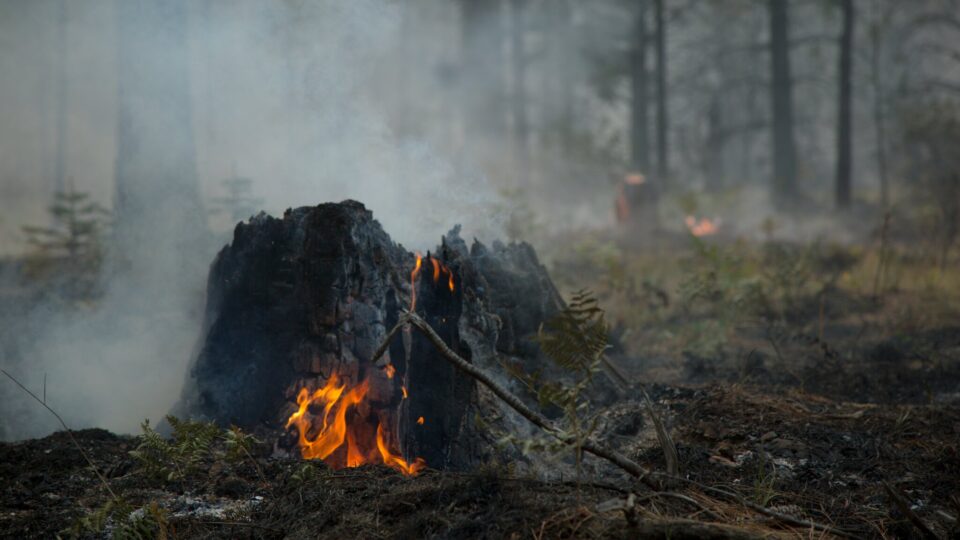Fires that go on for long periods of time, surviving the snow and rain of winter to reemerge in the spring, are becoming more common in high northern latitudes as the climate warms. Such fires are called holdover fires, hibernating fires, overwintering fires, or even zombie fires. Whatever people choose to call them, this type of wildfire is occurring more often.
These smoldering fires start out as flaming fires but then enter an energy-saver mode. They start above ground but then smolder in the soil or under tree roots through the winter. They barely survive based on the oxygen and fuel resources that they have but can transition back into flaming fires once conditions are more favorable.
Dutch researchers used ground-based data with fire detection data from NASA’s Moderate Resolution Imaging Spectroradiometer instruments on the Terra and Aqua satellites to study fires in the boreal forests of Alaska and Canada’s Northwest Territories. They found a way to identify overwintering fires based on their unique characteristics.
Their data indicates that overwintering fires tend to be linked to high summer temperatures and large fire seasons. Between 2002 and 2018, overwintering fires generally accounted for a small amount of the total burned area in the region but in individual years with hot and severe fire seasons, the number can escalate. In 2008 in Alaska, for example, overwintering fires accounted for nearly 40% of the burned area.
Early detection of these overwintering fires could help with fire management and reduce the amount of carbon – which is stored in large amounts in the region’s organic soils – that gets released to the atmosphere during fires.
**********
Web Links
Overwintering Fires on the Rise
Photo, posted September 14, 2017, courtesy of Andrew R. Mitchell/USDA via Flickr.
Earth Wise is a production of WAMC Northeast Public Radio.
